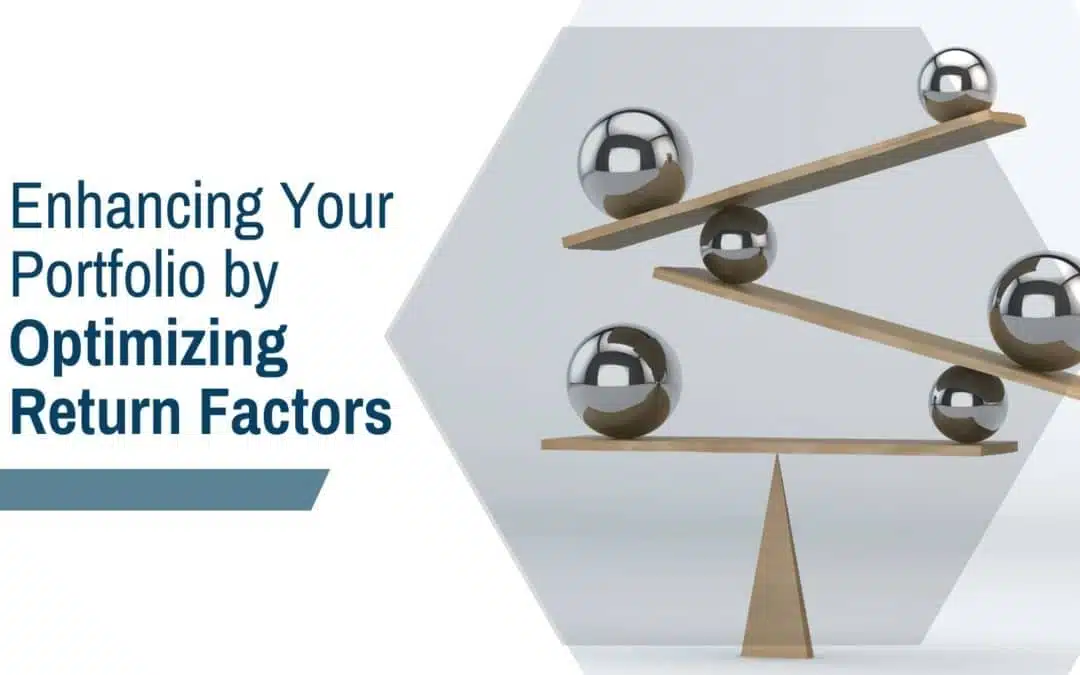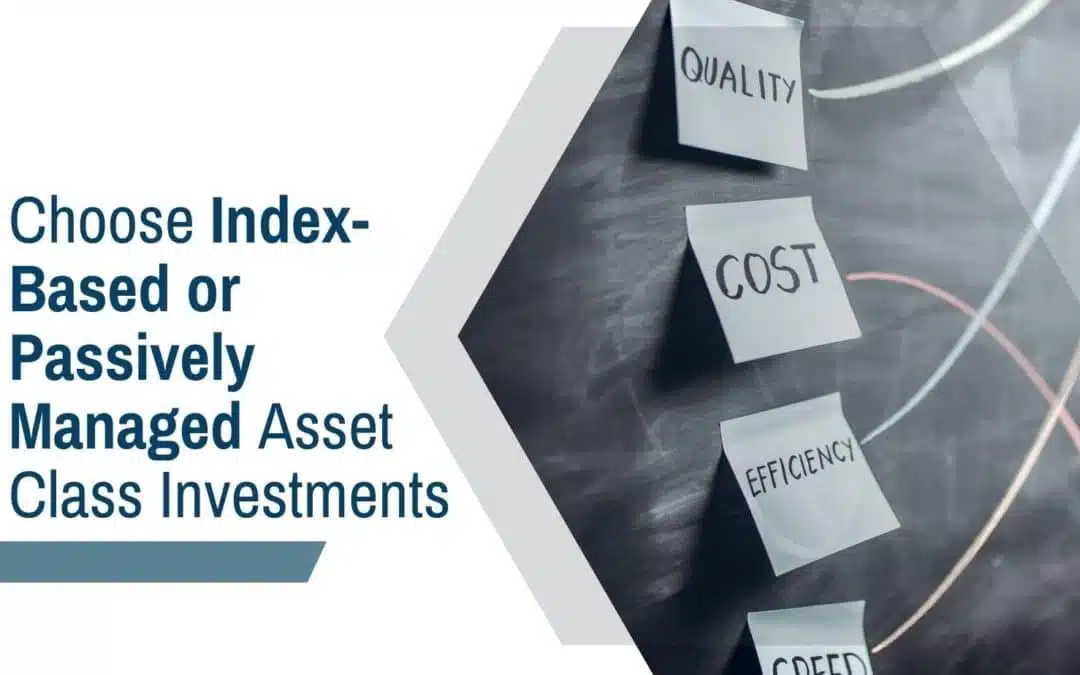the empowered investor
Planning for Your Prime Earning Power Years
Key Takeaways
- Once you hit your prime earning years, you should be able to accelerate your saving and investing efforts. Still, you may wonder whether you’re on track.
- Financial priorities include continuing to invest toward retirement, avoiding debt, protecting your loved ones through insurance and estate planning, and keeping an eye on tax strategies.
- During your career years, typical challenges to your financial well-being include Fear of Missing Out (FOMO), lifestyle creep, underestimating time, and underestimating money.
- Robust financial planning helps defend against all of these challenges. It enhances your personal and practical satisfaction, and reduces the likelihood you’ll have to make painful tradeoffs later in life.
“I can accept failure. Everyone fails at something. But I can’t accept not trying.”
When it comes to building wealth, life is full of pesky paradoxes. As we covered in our last post, Personal Financial Planning for Ages 25–35, there’s no better time to start investing than when you’ve still got decades ahead of you. But, Paradox #1, when you’re young and time-rich, you’re more likely to be income-poor.
Then, as we covered in our podcast, Your Power Play: Financial Planning for 35 to Pre-Retirees, you hit your prime earning years, when you can accelerate your investing. But, Paradox #2, tomorrow sneaks up fast. In your 40s, your 30-something years still seem fresh. But suddenly, retirement is tugging at your sleeve, and you’re wondering:
Am I on Track?
Because, Paradox #3, the longer you’ve been on your financial journey, the harder it can be to know where you’re at. We’ve covered this in our book, The Empowered Investor. Today, let’s zoom in on your best power plays for the age 35–65 sweet spot, when you’re not yet fully financially independent, but you’d love to do all you can to get there sooner than later.
BASKETBALL, MICHAEL JORDAN, AND YOUR FINANCIAL POWER PLAYS
Speaking of inspiration, have you had the chance to watch The Last Dance Netflix series, featuring basketball legend Michael Jordan? Besides deserving an entertaining thumbs-up, the series is a helpful analogy for thinking about your own financial power plays.
From age 25–45 we’re like Jordan at age 20, with much of our effort built on raw energy and blind faith in our future potential. From ages 45–60, we’re more like Jordan at age 27, when he became what seemed like an overnight sensation.
Throughout his NBA career, Jordan scored many amazing achievements. He also worked through some demoralizing setbacks. Either way, he seemed to be guided by an internal compass that helped him never stop trying, as he played his own unique long game.
Likewise, your prime earning years call for sustained, deliberate efforts to create an enduring lifestyle once your career eventually winds down. For that, a solid financial plan guides the way. This includes your current financial status, your long-term goals, and your intended actions for achieving those goals. It’s also a living document, flexible to evolve along with you and your life’s circumstances.
PUTTING YOUR FINANCIAL GEARS TO WORK
As we covered in our last post, every financial plan touches on six critical “gears”, with each one cranking harder for you at different points in your life.
- Investing: If you’ve not yet got one, you’ll want to have an Investment Policy Statement that reflects your ability, willingness, and need to grow or preserve your wealth. The younger you are, the more you can typically focus on growth, with higher exposures to stock market risks and expected rewards. As you mature, you may tilt toward more fixed income, to preserve what you’ve already got.
- Saving for Retirement: In your power years, you’ll probably want to step up your retirement planning to 15–20% of your annual income—especially if you did not start saving sooner. Based on Fidelity’s Global Retirement Savings Guidelines, if you’re 40 and you’ve not yet accumulated 3 times your current income, it’s time to kick your savings rate into even higher gear. By the time you’re 50, the goal is to have saved 6 times your current income, and so on.
- Debt management: You’ll also want to set a high priority to getting rid of any mid-career debt, especially high-interest loans. Not long ago, Canada stood out for its relatively low debt ratios. That’s less the case these days. With debt-to-income ratios hovering around 158% as of second quarter 2020 (versus a 1980s ratio closer to 66%), stats also suggest those in their 40s–50s may be most vulnerable.
“Think what you do when you run in debt: you give another power over your liberty.”
~ Benjamin Franklin - Risk management (insurance): Solid insurance coverage is essential once you start having kids, with additional protection if you are a business owner or entrepreneur. Once you achieve empty-nest status, you may be able to back off from protecting against career hits, but at that time it may become a tool within your estate planning.
- Estate planning: As your wealth accumulates, you’ll also want to have your estate plans in order, and review them every few years to ensure they remain relevant. Having a will with named guardians is especially essential once you have dependents.
- Tax planning: As your assets grow, so does the need to accrue, invest, and spend them in a tax-wise manner. After all, while we are all obligated to pay our fair share in taxes, there’s no need to leave the government an extra-large “tip”.
OVERCOMING OBSTACLES
Nobody’s life is an uninterrupted success story—not even Michael Jordan’s. Many setbacks are beyond our control. But we can at least try to avoid the self-inflicted ones. The following challenges are some of the common missteps that can chip away at your ability to save and invest toward financial independence during your power-earning years.
FEAR OF MISSING OUT (FOMO):
In your investment portfolio and your lifestyle, FOMO causes poor financial habits. In investing, it tempts you to chase costly trends instead of taking a patient, evidence-based approach. In life, it spurs you to save less and spend more by trying to “keep up with the Joneses.” Both detract from your true financial well-being.
LIFESTYLE CREEP:
As your income increases, it’s only natural to increase your spending too. Gratifications that used to seem like luxuries can become second nature. Household expenses tend to increase as well, especially if you’re supporting both kids and aging parents. There’s certainly nothing wrong with spending more as you earn more, but we recommend an informed approach. Are you first setting aside enough for future wants and needs? Are you keeping tabs on where the rest is going?
UNDERESTIMATING TIME:
As touched on above, time has a way of deceiving us into feeling about 10 years younger than we actually are, especially along the road to financial freedom. That’s mostly a blessing. But it can backfire on you if you hit 65 years old, and you only have the savings of a 55-year-old.
UNDERESTIMATING MONEY:
How much does it really take to stop working at age 65? Many families don’t realize how much preparation it’s going to take to replace roughly 75% of their pre-retirement income by then. If you have been working your entire life in Canada, figure, you can roughly expect to receive $18,000–$22,000 annually in Canadian benefits: $12,000–$15,000 from the CPP/QPP (Canada Pension Plan/Quebec Pension Plan) – see note below, plus $7,700 in OAS (Old Age Security). The rest needs to come from your own taxable and registered investment accounts.
Note: Each Canadian will have a unique CPP/QPP calculation made that is based on the number of years they have worked along with their contributions amounts. The rest needs to come from your own taxable and registered investment accounts.
ONE SOLUTION FITS ALL: PLANNING
Fortunately, there’s one best defense against all these obstacles: robust financial planning.
Financial planning is a gift to yourself and your loved ones. It adds more control, better direction, and increased peace of mind. With a clearer view of what lies ahead, you’re more likely to be able to take the actions you can, and achieve the outcomes you desire.
On the flip side, the absence of planning heightens the uncertainty about where you stand. If you’re unsure your money will last, you may need to work longer, depend on loved ones for extra support, cut back from the lifestyle you’ve grown accustomed to, or otherwise make painful, undesirable tradeoffs later in life.
By taking the time to understand your saving and spending requirements during your career, and always putting money aside for the future, you stand the best chance of achieving personal satisfaction and practical success throughout your life.
NEXT UP: YOUR CHILL-OUT YEARS
We covered a lot of ground in today’s post. Next up, we’ll take on financial planning during your “chill-out years”, when you’ll want to maintain or even enhance your desired lifestyle in retirement. In the meantime, if you have questions or comments about what you’ve read so far, please reach out to us today. We’d love to hear from you!
Additional Reading:
- The Way to Wealth: Benjamin Franklin
- The Little Book of Common Sense Investing: John Bogle
- And, as always, our own book: The Empowered Investor
More Winning Investment Principals

Investment Principal #4: Maximize Returns with Key Investment Factors
Discover how investment factors can help you maximize returns. Learn strategic factor investing to enhance your portfolio.

Investment Principal #3: Using Passive/Index Funds or ETFs
Index-based or passive asset class funds focus on how to reduce the costs and frictions involved in capturing the market’s generous expected returns over time.

Investment Principal #2: Diversify Your Asset Classes
The magic behind diversification is found in a financial measure known as correlation, or the degree to which two asset classes move in similar patterns.
Stay on top of your financial education
Subcribe and follow to get updates on important wealth management topics.

Connect
Visit Us
3535 St-Charles Blvd.
Suite 703
Kirkland, Quebec
H9H 5B9
Connect